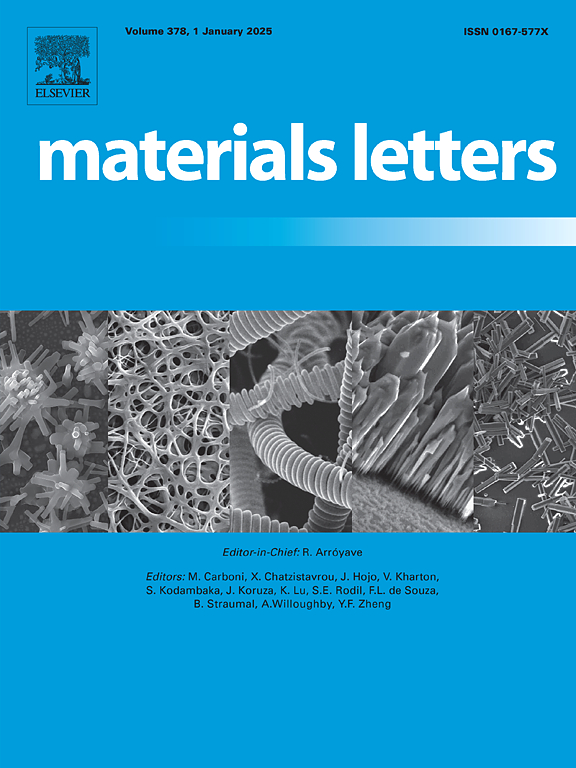聚二甲基硅氧烷(PDMS)的微流体发泡技术
IF 2.7
4区 材料科学
Q3 MATERIALS SCIENCE, MULTIDISCIPLINARY
引用次数: 0
摘要
多孔聚二甲基硅氧烷(PDMS)材料广泛应用于传感器、环境和组织工程等领域。我们介绍了一种制造多孔聚二甲基硅氧烷(PDMS)的微流体发泡方法,可精确控制孔径和分布。通过在发泡过程中调节气体压力,可以制造出具有均匀和梯度孔隙率的 PDMS 结构,从而实现机械性能的微调。这种微流体方法不仅简化了生产过程,还能合理设计具有定制机械特性的多孔 PDMS。本文章由计算机程序翻译,如有差异,请以英文原文为准。
Microfluidic foaming of polydimethylsiloxane (PDMS)
Porous polydimethylsiloxane (PDMS) materials are widely used in areas including sensors, environment and tissue engineering. We presented a microfluidic foaming method for fabricating porous PDMS, offering precise control over pore size and distribution. By adjusting gas pressure during the foaming process, PDMS structures with both uniform and gradient porosity were created, enabling fine-tuning of mechanical properties. The microfluidic approach not only simplifies the production process but also allows for the rational design of porous PDMS with customized mechanical characteristics.
求助全文
通过发布文献求助,成功后即可免费获取论文全文。
去求助
来源期刊

Materials Letters
工程技术-材料科学:综合
CiteScore
5.60
自引率
3.30%
发文量
1948
审稿时长
50 days
期刊介绍:
Materials Letters has an open access mirror journal Materials Letters: X, sharing the same aims and scope, editorial team, submission system and rigorous peer review.
Materials Letters is dedicated to publishing novel, cutting edge reports of broad interest to the materials community. The journal provides a forum for materials scientists and engineers, physicists, and chemists to rapidly communicate on the most important topics in the field of materials.
Contributions include, but are not limited to, a variety of topics such as:
• Materials - Metals and alloys, amorphous solids, ceramics, composites, polymers, semiconductors
• Applications - Structural, opto-electronic, magnetic, medical, MEMS, sensors, smart
• Characterization - Analytical, microscopy, scanning probes, nanoscopic, optical, electrical, magnetic, acoustic, spectroscopic, diffraction
• Novel Materials - Micro and nanostructures (nanowires, nanotubes, nanoparticles), nanocomposites, thin films, superlattices, quantum dots.
• Processing - Crystal growth, thin film processing, sol-gel processing, mechanical processing, assembly, nanocrystalline processing.
• Properties - Mechanical, magnetic, optical, electrical, ferroelectric, thermal, interfacial, transport, thermodynamic
• Synthesis - Quenching, solid state, solidification, solution synthesis, vapor deposition, high pressure, explosive
 求助内容:
求助内容: 应助结果提醒方式:
应助结果提醒方式:


